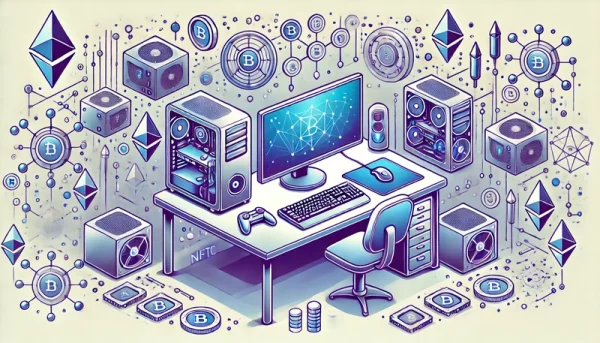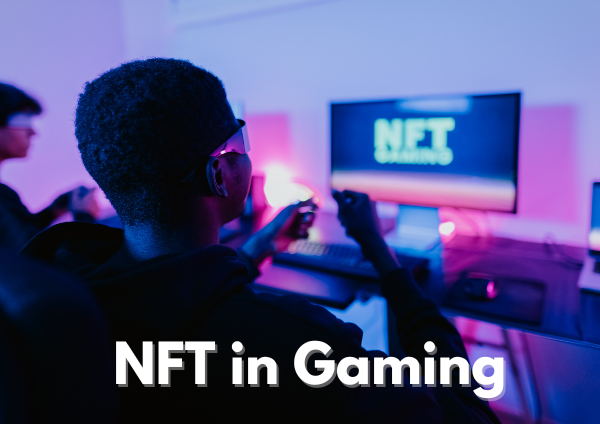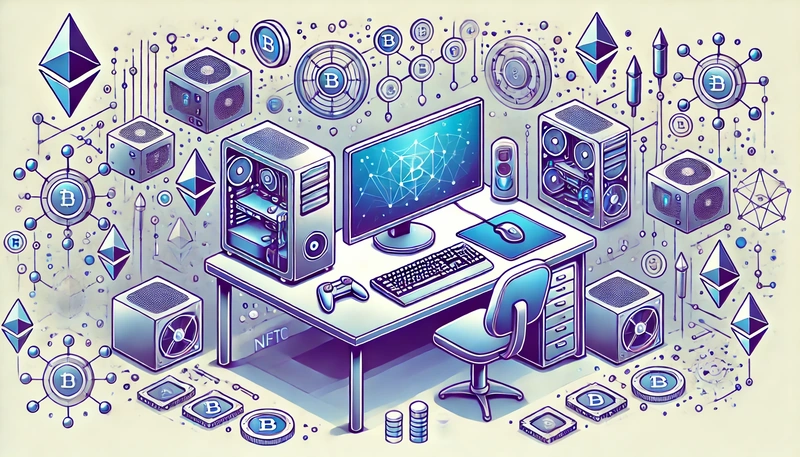What is Play-to-Earn (P2E)? How It Works
Play-to-Earn (P2E) games are changing the way people play. These games let players earn rewards, like cryptocurrency or NFTs (non-fungible tokens), while having fun. But how are they different from regular games? Let’s find out.
Table of content
What is Play-to-Earn (P2E)?
The phenomenon of in-game things having real-world value is known as “in-game value.” In-game value has become an irresistible trend for many popular titles. The concept that players would collectively assign value to a video game's contents, including gameplay aspects and both functional and purely cosmetic in-game goods, has been demonstrated by traditional gaming economic models.
Player-generated value is becoming more and more prevalent in a wide range of video games across various genres, as evidenced by the thriving marketplaces and rising prices of rare in-game items in titles like Counter-Strike: Global Offensive (CS:GO), Valorant, World of Warcraft, Genshin Impact, and many more.
In most games, the developers own all the in-game items. With P2E, things are different. You, as the player, actually own what you earn. Blockchain technology makes this possible by proving ownership of digital assets like characters, items, or even land. You can trade these items with other players or sell them for real money, giving your time in the game real value.
How Do P2E Games Work?
P2E games use blockchain technology to safeguard their systems and establish an equitable playing field. These games are created by developers using platforms like Ethereum or Solana, which smoothly incorporate blockchain functionality. To ensure that every item in these games has a unique identity, in-game things are transformed into NFTs, unique digital assets.
Through a variety of in-game activities, such doing tasks, hitting milestones, or taking part in combat, players can obtain these items. The gamers have complete authority over their digital inventory as a direct result of the transfer of ownership. P2E games give players the freedom to trade, sell, or utilize their assets anyway they see fit, in contrast to traditional games where producers retain control.
Players can safely buy and sell their NFTs through marketplaces in these games or on other platforms. Every transaction is transparent thanks to blockchain technology. Furthermore, a lot of P2E games eliminate the need for centralized control by automating tasks like managing ownership or allocating rewards through the use of smart contracts.
One of the most appealing aspects of P2E is the ability to convert in-game earnings into real-world money. Tokens or NFTs earned in the game can be exchanged for cryptocurrency, which can then be traded for fiat currency on crypto exchanges. This system allows players to transform their time and skills into tangible financial rewards.
Types of Play-to-Earn Games
There are many kinds of P2E games, each offering a different experience:
NFT Games: Gathering and trading digital items, such cards or characters, is the main focus of NFT games. There are two examples of Axie Infinity, in which players raise creatures, and Gods Unchained, a strategy-based card game with real awards. In these games, players can build collections that could increase in value over time.
Farming Games: These games reward players for managing resources or cultivating crops. With consistent earning possibilities for committed players, they frequently emphasize strategy and consistency. Well-known games include Farmers World, where managing resources is directly related to obtaining prizes.
DeFi Games: These combine finance with gaming. Players can earn by contributing to the game’s ecosystem through activities like liquidity farming. Games like DeFi Kingdoms teach players blockchain concepts and reward them for participating in decentralized finance protocols.
Trading Card Games: By gathering rare cards and participating in tournaments, players can earn money in games like Splinterlands. The trade function improves the strategy-based gameplay, enabling players to profit from strong and rare cards.
AAA Web3 Games: These top-notch games offer engaging gameplay and blockchain features. Games like Illuvium combine classic AAA gaming with Play-to-Earn prizes, offering intricate gameplay mechanics and breathtaking visuals.
Benefits and Challenges
P2E has both benefits and challenges and could have a different impact on various players.
P2E games allow players to earn real rewards, such as cryptocurrency or NFTs, turning gaming into a way to make money. They also give players ownership of their digital assets, which can be traded or sold freely. Additionally, these games are accessible worldwide, offering financial opportunities to people in regions with limited traditional income sources.
However, many P2E games demand high initial costs, making it challenging for beginners to get started. Because in-game assets are so erratic in value, profits can change suddenly. Players are also confused about how their gains will be handled because tax laws and regulations differ from one nation to the next.
Examples of Popular Games
Axie Infinity
Axie Infinity is one of the most popular Play-to-Earn games. Players collect, breed, and battle creatures called Axies, which are unique NFTs. Owning Axies means players have full control over their characters, allowing them to trade, sell, or use them in gameplay. Players earn Smooth Love Potion (SLP) tokens by completing quests or winning battles.
Because these tokens can be traded for actual cash on cryptocurrency exchanges, the game offers both financial rewards and entertainment value. To strengthen their teams or profit from uncommon finds, players purchase and sell Axies on marketplaces in Axie Infinity's thriving in-game economy.
The Sandbox
Players can create, own, and profit from virtual experiences in the decentralized metaverse known as the Sandbox. NFTs, which can be turned into games, art galleries, or even social gathering places, are virtual land that players buy. Players can purchase assets, exchange NFTs, or profit from the sale of their inventions thanks to the platform's SAND tokens, which power its economy.
The Sandbox is unique in that it allows gamers to create their own virtual worlds without the need for coding knowledge. Artists, developers, and gamers who wish to make money from their work and interact with a worldwide community are drawn to this creative hub.
How to Start with P2E
Starting with P2E games is easier than it seems:
- Choose a Game: Find a game that matches your interests and budget. Axie Infinity is great for battling, while The Sandbox focuses on creativity.
- Set Up a Wallet: You’ll need a crypto wallet to store your rewards. Options like MetaMask or Trust Wallet work well. Keep your wallet secure by never sharing your recovery phrase.
- Get Starter Items: Some games require you to buy items to play. For instance, Axie Infinity needs you to purchase Axies, while The Sandbox allows you to buy land or tools.
- Learn the Rules: Take time to understand how the game works. Read guides or watch tutorials to improve your chances of earning.
- Start Playing: Dive into the game, complete challenges, and start earning tokens or NFTs.
Future of Play-to-Earn
As interest and technology increase, play-to-earn (P2E) gaming appears to have a promising future. Blockchain technology is improving the security, scalability, and efficiency of these games while resolving some of their initial problems, such expensive fees and sluggish transactions. As a result, more gamers are entering the ecosystem and more developers are producing imaginative games.
Integrating virtual reality (VR) and metaverse platforms will take P2E games to the next level. These technologies will allow players to immerse themselves in virtual worlds where they can interact with others, trade assets, and earn rewards in real-time. Imagine exploring a fully immersive game where every item, land plot, or character you own has real-world value that you can trade or sell.
P2E gaming also attracts significant investment from companies and venture capitalists, driving the development of AAA-quality games with Play-to-Earn mechanics. This could blur the line between traditional gaming and blockchain-based gaming, making P2E more appealing to mainstream players.
FAQs About Play-to-Earn
How does P2E work?
P2E (Play-to-Earn) games allow players to earn real-world rewards, usually cryptocurrency or NFTs, by participating in the game.
Are P2E games legal?
P2E games are legal in many countries, but their legality depends on local laws surrounding cryptocurrency and online gambling.
Which P2E game is the best?
The best P2E games depend on personal preferences, but popular ones include Axie Infinity, Decentraland, and The Sandbox.
Are P2E games free?
Some P2E games are free to play, while others require an initial investment to participate.
How to play P2E?
To play P2E games, players typically need to create an account, earn in-game rewards through gameplay, and then convert those rewards into cryptocurrency or NFTs.





![Top 10 Crypto Games To Play in [year]](https://betoncrypto.io/app/uploads/2024/11/image1-2.webp)
